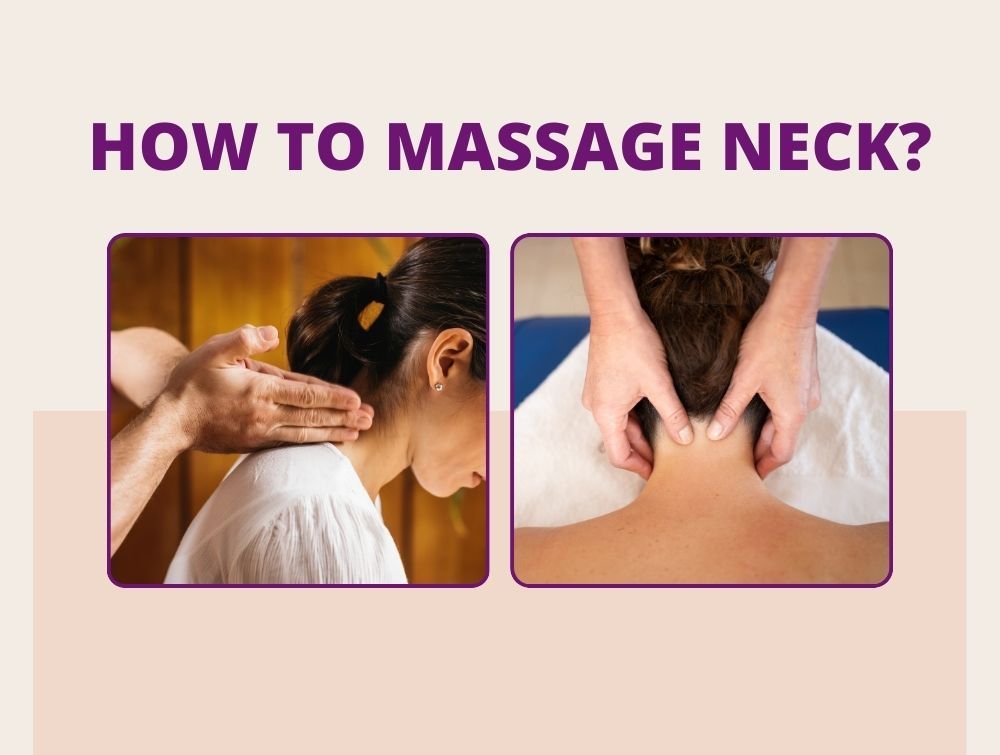Introduction
Neck massage is a simple yet effective way to ease muscle tension, reduce stress, and improve overall well-being. Many people experience stiffness and discomfort in their necks due to long hours of work, poor posture, or underlying health issues.
Whether it’s from sitting at a desk all day, stress-related muscle tightness, or a lingering ache from an injury, a proper massage can provide noticeable relief.
The benefits of neck massage go beyond just relaxation. It promotes better blood flow, reduces strain in overworked muscles, and can even help with headaches caused by tension. By learning how to massage neck muscles correctly, individuals can address everyday discomfort and prevent chronic issues.
Understanding why you should take a neck massage can help individuals take proactive steps toward managing pain and stress. When done correctly, it can provide long-term relief and improve flexibility, making daily activities easier and more comfortable.
What is Neck Massage?
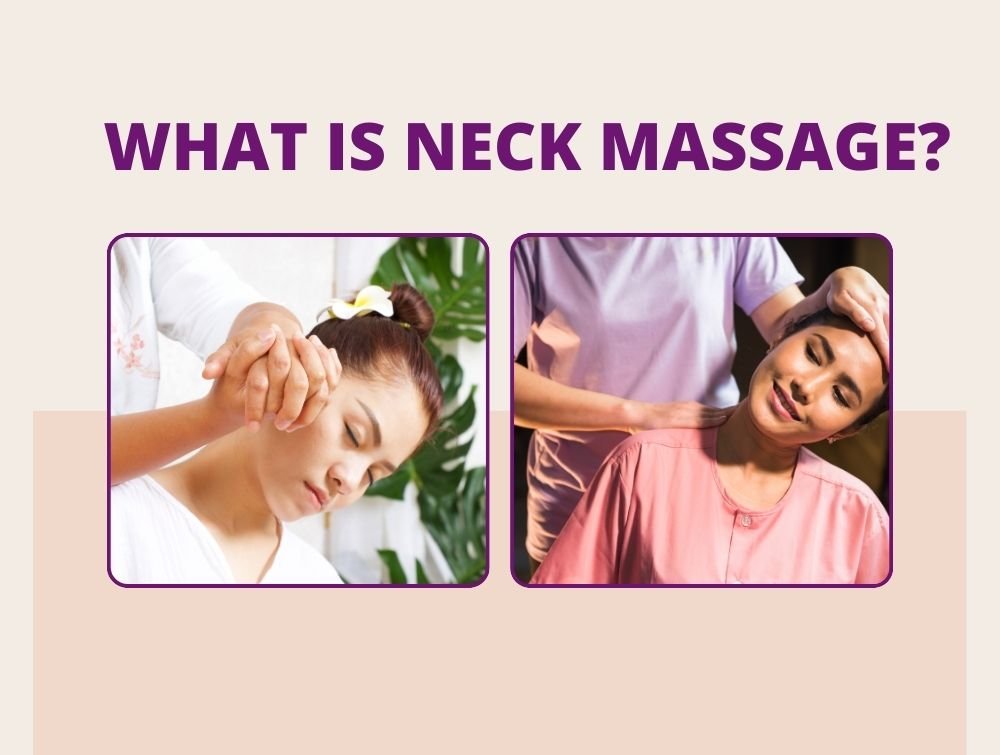
A neck massage is a therapeutic technique designed to relieve tension, improve blood flow, and reduce muscle stiffness in the neck and upper shoulders. It involves applying pressure through kneading, stroking, or gentle tapping motions to release tight muscles and promote relaxation. Whether performed by a professional or done as a self-massage, this practice helps ease discomfort caused by stress, poor posture, or prolonged sitting.
Who Needs a Neck Massage?
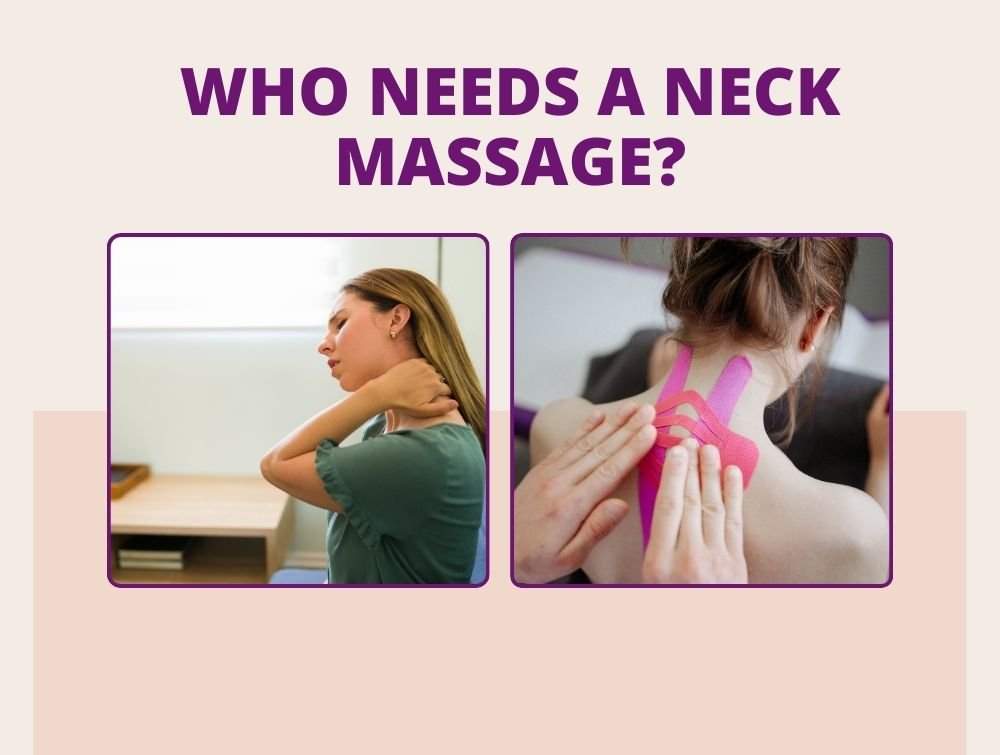
A neck massage is beneficial for many individuals, especially those dealing with daily discomfort, stress, or muscle tension. Understanding who requires a neck massage can help in choosing the right technique to improve overall well-being.
- Office Workers and Remote Professionals
Sitting for long hours in front of a screen often leads to stiffness and pain in the neck and shoulders. Poor posture and repetitive movements contribute to muscle tightness, making a massage an effective way to relieve built-up tension. - Athletes and Fitness Enthusiasts
Engaging in intense physical activity puts strain on the muscles, leading to soreness and stiffness. A deep tissue massage at home can help athletes recover faster by targeting muscle knots and promoting better flexibility. - Individuals Recovering from Injuries or Medical Conditions
People recovering from neck injuries, whiplash, or post-surgical conditions often experience reduced mobility and discomfort. A gentle massage can support the healing process by increasing circulation and easing tension. - Those Seeking Stress Relief and Relaxation
Stress can manifest physically, causing muscle tension in the neck and upper back. A professional session from the best home massage service can provide relief, improving relaxation and mental well-being.
By incorporating neck massages into a regular routine, individuals can experience significant improvements in comfort and movement, whether for pain relief or relaxation.
Benefits of Neck Massage
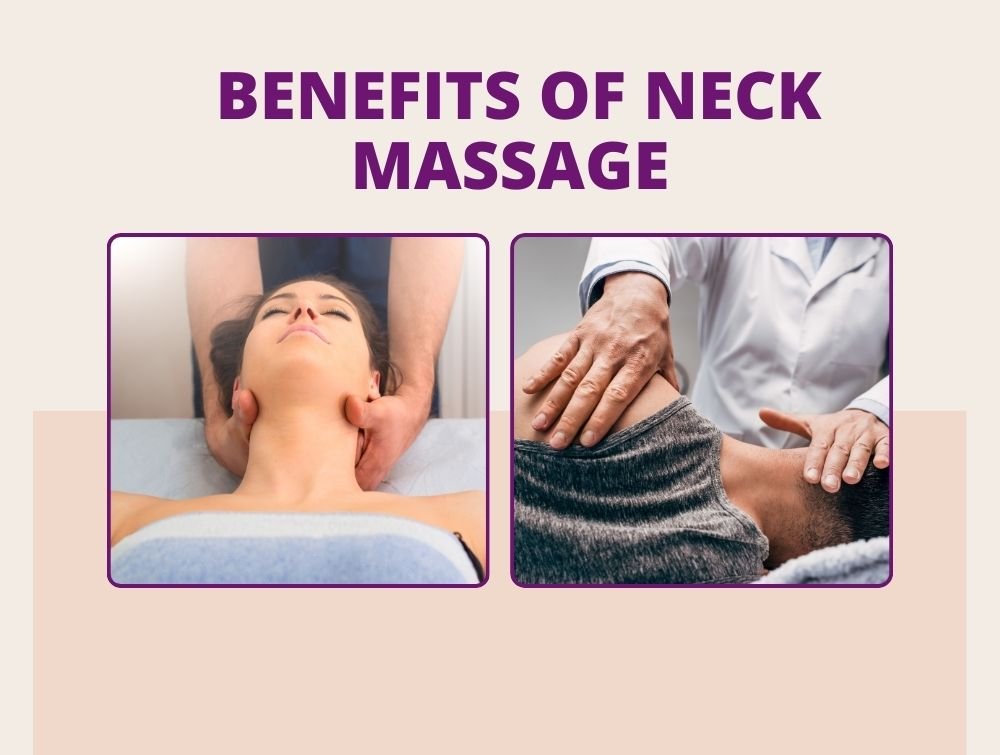
A well-executed neck massage does more than just relieve tension. It provides multiple health benefits that improve both physical and mental well-being. Understanding the benefits of neck massage can help individuals incorporate this practice into their routine for lasting relief.
1. Relieves Muscle Tension and Pain
Many people experience tightness and discomfort in their neck due to stress, poor posture, or physical strain. Massage techniques help relax stiff muscles, reduce knots, and ease discomfort. Whether it’s from long hours at a desk or strenuous physical activity, regular sessions can bring noticeable relief.
2. Improves Blood Circulation
Massaging the neck stimulates blood flow, helping to deliver oxygen and nutrients to the muscles. Better circulation reduces inflammation, speeds up recovery from minor strains, and enhances overall muscle function. This is particularly useful for individuals experiencing chronic stiffness or slow healing.
3. Enhances Flexibility and Mobility
Tight neck muscles can limit movement, making daily activities uncomfortable. Massage therapy helps loosen these muscles, improving range of motion and making it easier to turn, bend, and move without discomfort. People recovering from injuries or dealing with stiffness from prolonged sitting can benefit significantly.
4. Reduces Stress and Anxiety
Stress often builds up in the neck and shoulders, leading to muscle tightness and headaches. A massage triggers the body’s relaxation response, lowering stress hormone levels and promoting a sense of calm. Understanding why you should take a neck massage can be especially helpful for individuals dealing with high-pressure environments or frequent anxiety.
5. Promotes Better Sleep
A relaxed body leads to better sleep quality. Neck massage helps release muscle tension and encourages relaxation, making it easier to fall asleep and stay asleep. It can be particularly useful for individuals who struggle with restlessness due to discomfort or stress-related tension.
By incorporating neck massage into a wellness routine, individuals can experience not just temporary relief, but long-term improvements in overall comfort and relaxation.
Best Neck Massage Techniques
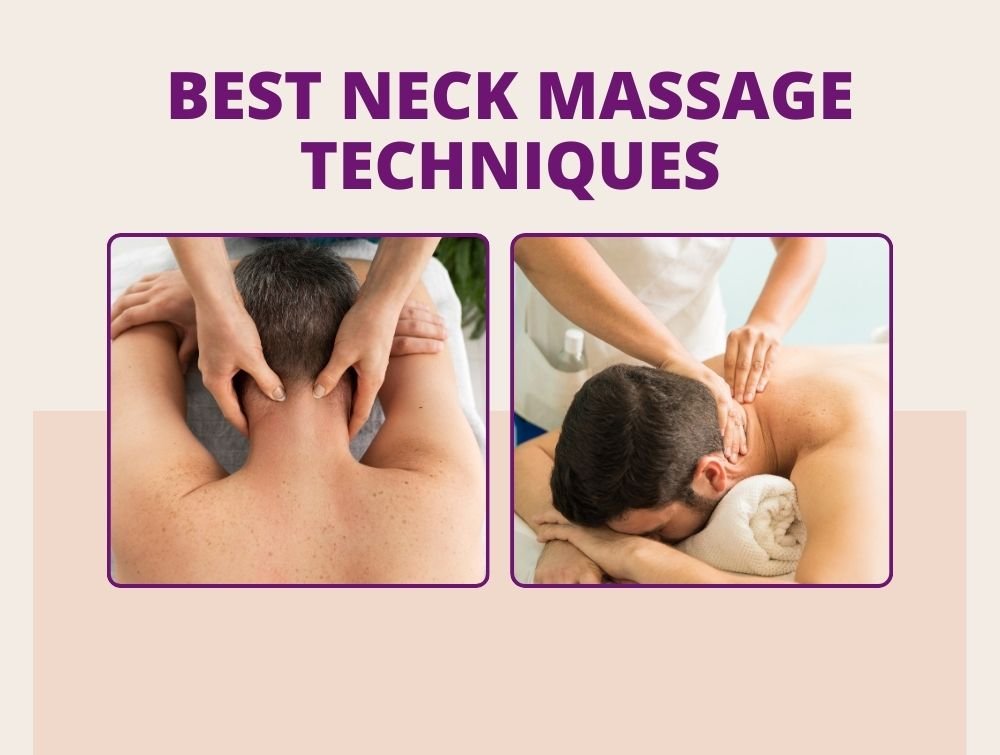
Different massage methods can help relieve tension, improve circulation, and ease discomfort in the neck. Whether using self-massage, partner-assisted techniques, or specialized tools, the right approach depends on individual needs and preferences. Learning how to do neck massage properly can enhance the experience and maximize benefits.
Self-Massage Techniques
Self-massage is a simple and effective way to relieve muscle stiffness and discomfort. It allows individuals to target sore areas and control the amount of pressure applied.
- Using Fingers and Knuckles: Applying gentle yet firm pressure with fingers or knuckles can help loosen tight muscles. Circular motions and gentle strokes along the neck can improve circulation and reduce stiffness.
- Trigger Point Therapy: This method focuses on pressing specific areas where muscle knots are located. Holding pressure on these points for 10–15 seconds can help release tension and reduce localized pain.
These techniques are particularly useful for people who sit for long hours or frequently experience muscle tightness. Understanding which are the best neck massage techniques can help individuals choose the most effective approach for relief.
Partner-Assisted Techniques
For those who prefer a deeper massage, assistance from a partner can help apply consistent pressure to relieve tension. Proper technique is essential to prevent discomfort or strain.
- Proper Hand Placement: Hands should be placed along the upper back and shoulders to target key muscle groups. Using thumbs to apply steady pressure along the sides of the neck can help ease tightness.
- Avoiding Excessive Pressure: A gentle approach ensures the massage is effective without causing pain. Sudden or excessive force may lead to soreness rather than relief.
People seeking professional services can consider neck massage in Mumbai, where trained specialists provide targeted therapy for pain relief and relaxation. Learning how to massage your neck properly can improve results and prevent injury.
Using Massage Tools
Massage tools can enhance the experience by providing consistent pressure and added benefits such as heat therapy. They are ideal for individuals looking for a more convenient way to relieve neck pain at home.
- Massage Rollers and Electric Massagers: These tools help release muscle knots and improve blood circulation. Some electric massagers offer adjustable intensity settings for customized relief.
- Heat Therapy: Heated massage pads and warm compresses help relax tight muscles by increasing blood flow and reducing stiffness.
Selecting the right tool depends on individual needs. Professional services such as best home massage service or home massage service can also provide personalized relief without the need for self-massage.
Step-by-Step Guide to a Perfect Neck Massage
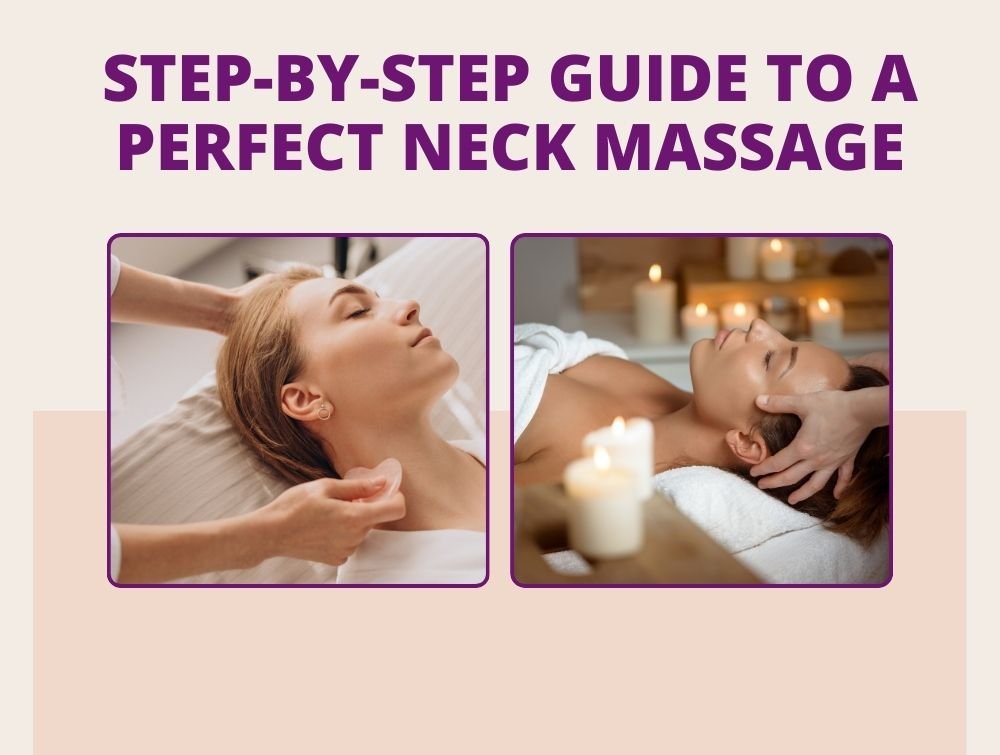
A well-executed neck massage can provide lasting relief from muscle tension, stress, and discomfort. Following the right steps ensures a soothing and effective experience. Whether performed at home or as part of a spa service at South Mumbai, creating the right environment and using the correct techniques can make a significant difference.
Preparation Before a Massage
Setting up a comfortable space helps create a relaxing experience, allowing the muscles to fully respond to the massage.
- Choosing the Right Environment: A quiet space with soft lighting and a comfortable seating position helps maximize relaxation. A chair with good back support or a cushioned surface works well.
- Using Oils or Lotions: Applying massage oil or lotion reduces friction and enhances the flow of movements. Essential oils like lavender or eucalyptus can add a calming effect.
For those who prefer professional services, a massage service at home can provide a convenient and comfortable option, allowing individuals to receive expert care in their own space.
Step-by-Step Instructions
Following a structured approach helps loosen muscles, improve circulation, and relieve tension.
- Warm-Up Movements: Begin with gentle strokes along the neck and shoulders using the palms or fingertips. This increases blood flow and prepares the muscles for deeper pressure.
- Applying Pressure Correctly: Use the thumbs to apply slow, circular pressure along the base of the skull and down the sides of the neck. Gradually work through any tight spots or knots.
- Targeting Tension Points: Press gently on tense areas, holding for 10–15 seconds before releasing. This technique, often used in deep tissue massage at home, helps release tight muscles.
- How Long to Massage Each Area: Spend 3–5 minutes on each section of the neck, adjusting pressure based on comfort level. Avoid overworking any area to prevent soreness.
Understanding how to do neck massage correctly ensures the best results while avoiding unnecessary strain or discomfort.
Post-Massage Care
After a massage, taking care of the muscles helps extend the benefits and prevent stiffness.
- Stretching for Flexibility: Gentle neck stretches can help maintain mobility and prevent tightness from returning.
- Hydration and Rest: Drinking water helps flush out toxins released during the massage, while a few minutes of rest allows the body to fully absorb the effects.
For a complete experience, booking a neck massage in Mumbai or opting for the best home massage service can provide expert care, ensuring the best possible results.
By following these steps, individuals can enjoy a safe, effective, and relaxing massage experience that relieves tension and promotes overall well-being.
Common Mistakes to Avoid While Massaging the Neck
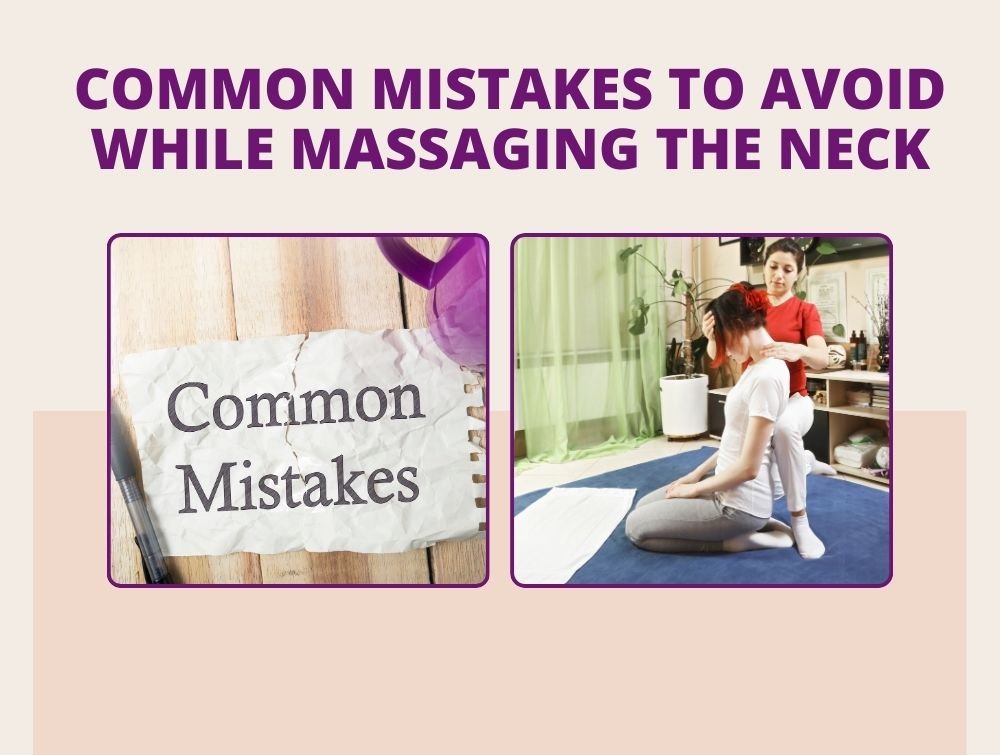
A neck massage can be highly effective in relieving tension and promoting relaxation, but using incorrect techniques may do more harm than good. Understanding how to massage your neck properly can help prevent common mistakes that could lead to discomfort or injury.
1. Applying Too Much Pressure
Pressing too hard on the neck muscles can cause pain instead of relief. While firm pressure is helpful for deep tension, excessive force can lead to soreness or even worsen existing tightness. Adjusting the pressure to a comfortable level ensures that the massage remains effective and safe.
2. Ignoring Signs of Nerve Compression
The neck contains delicate nerves that can become compressed due to improper technique. If tingling, numbness, or sharp pain occurs, stopping the massage immediately is important. People with pre-existing conditions, such as cervical spine issues, should consult a professional before attempting self-massage.
3. Using the Wrong Massage Techniques
Not all methods work for every situation. Choosing which are the best neck massage techniques depends on the type of discomfort. For instance:
- Gentle strokes are better for stress relief.
- Deep pressure techniques are more suited for chronic muscle knots.
- Trigger point therapy targets specific tension spots.
Understanding the right method for each need ensures the massage is both beneficial and safe.
By being aware of these mistakes, individuals can enjoy the full benefits of a proper neck massage while avoiding unnecessary strain or injury.
When to Avoid Neck Massage?
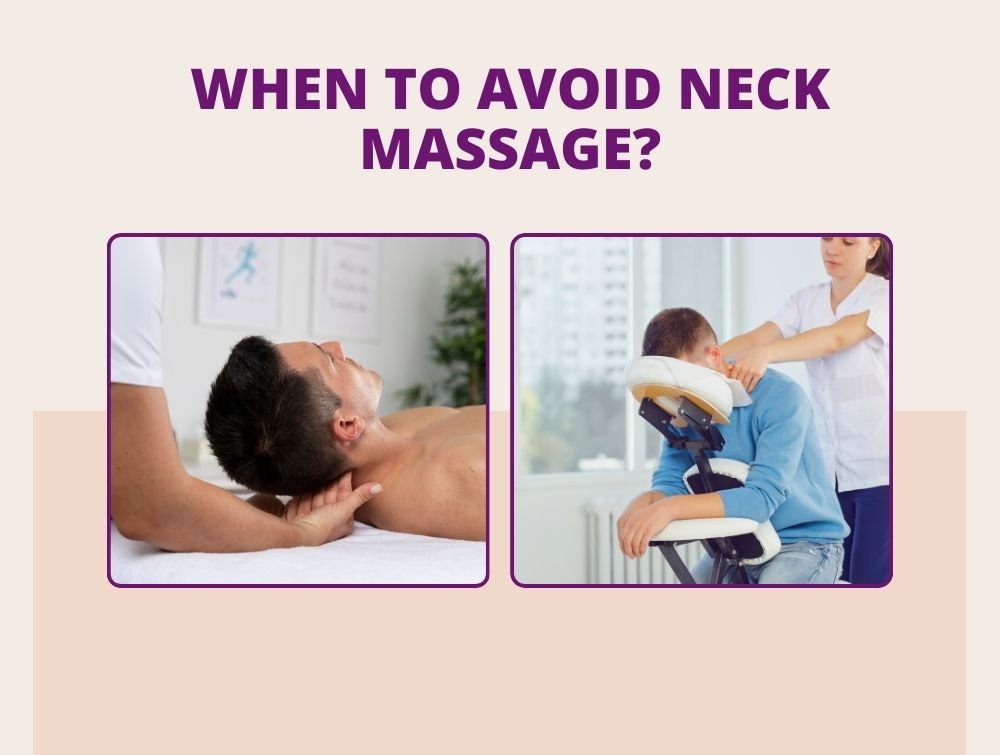
While a neck massage can provide relief and relaxation, there are times when it may not be the right solution. Certain conditions require caution, and in some cases, professional guidance is necessary to prevent complications.
1. If You Have a Medical Condition
People with spine-related issues, such as herniated discs or nerve compression, should avoid self-massage unless approved by a healthcare professional. Applying pressure to an already sensitive area could worsen the condition. Those recovering from injuries should consider professional services like neck massage in Mumbai, where trained therapists can use the right approach.
2. If the Pain Worsens After a Massage
A massage should relieve tension, not increase discomfort. If pain worsens or lingers after a session, it may indicate an underlying issue that requires medical attention. Overuse of deep tissue massage at home can sometimes strain the muscles instead of promoting recovery. Listening to the body and adjusting the intensity or technique is important.
3. Consulting a Professional When Necessary
For individuals with chronic pain, mobility limitations, or existing medical conditions, seeking professional advice ensures safety. A trained therapist can assess the issue and recommend the most suitable treatment approach.
Knowing when to avoid a neck massage is just as important as knowing how to perform one correctly. If there is any doubt, consulting a healthcare provider can help prevent complications and ensure safe pain management.
Neck Massage vs Professional Therapy
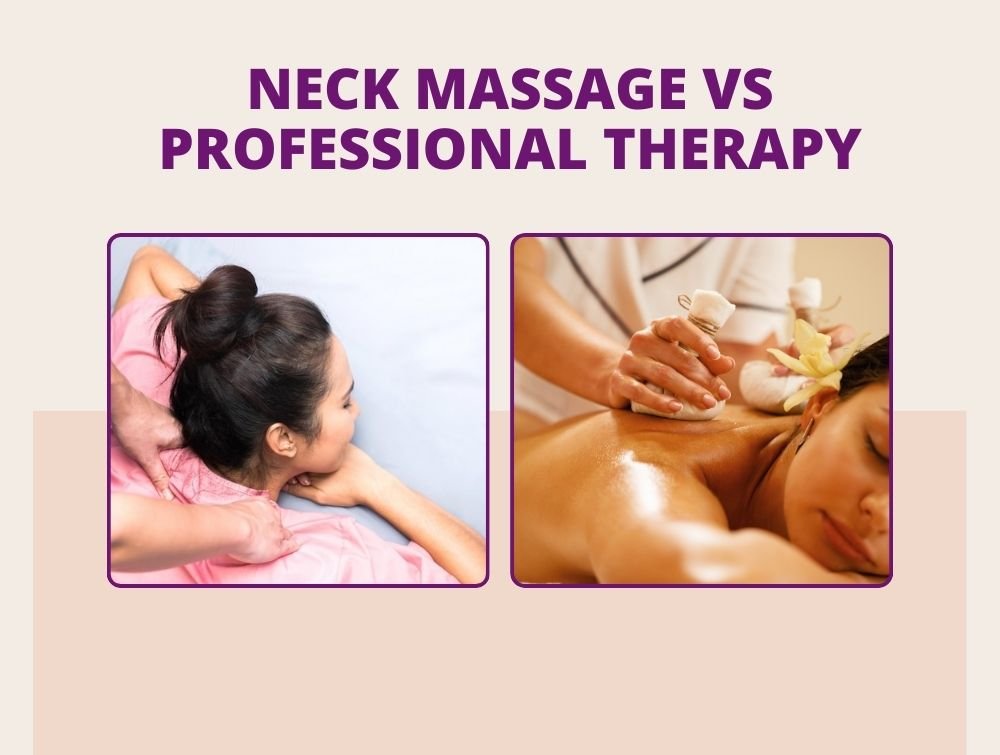
When dealing with neck tension or discomfort, choosing between self-massage and professional therapy depends on the severity of the issue and personal preference. While at-home techniques can provide relief for mild stiffness, professional services offer targeted treatment for deeper concerns.
When to Do Self-Massage
A self-massage is ideal for daily maintenance and minor muscle tension. It allows individuals to control pressure and target specific areas of discomfort. People who spend long hours at a desk or experience occasional tightness can benefit from simple techniques to relax the muscles.
- Helps with general muscle relaxation and stress relief.
- Easy to perform at any time without scheduling an appointment.
- Suitable for mild tension and improving flexibility.
For individuals looking for a more structured experience, services like massage service at home provide convenience while ensuring professional care.
When to See a Professional
A trained therapist offers a more effective approach when dealing with chronic pain, injury recovery, or deep muscle stiffness. A professional massage can target deeper layers of muscle tissue and improve circulation in ways that self-massage cannot.
- Beneficial for people with long-term stiffness or medical conditions.
- Helps with injury recovery and post-surgical rehabilitation.
- Uses specialized techniques that are difficult to replicate at home.
Choosing the best home massage service allows individuals to experience expert treatment in a familiar and comfortable setting. Services like Fem Spa provide customized massage solutions, ensuring relaxation and pain relief without the need to visit a clinic.
Both self-massage and professional therapy have their benefits, and the right choice depends on individual needs. While self-massage is a great tool for regular maintenance, professional therapy offers a structured and in-depth approach for long-term relief.
Facts About Neck Massage
Scientific research has explored the effects of neck massage on pain relief and muscle function. Here are some key findings:
- Pain Reduction: A systematic review indicated that massage therapy might offer immediate relief for neck and shoulder pain compared to inactive treatments. However, its effectiveness was comparable to other active therapies, such as exercise or acupuncture.
- Frequency Matters: Research from the University of Washington found that participants receiving multiple 60-minute massages weekly experienced more significant improvements in chronic neck pain than those with fewer or shorter sessions.
- Short-Term Benefits: A Cochrane review suggested that massage therapy might result in minimal to no difference in pain and function for subacute and chronic neck pain when compared to placebo treatments.
- Occupational Impact: A longitudinal study in North Macedonia observed that consistent medical massage sessions led to a significant reduction in neck pain among various professionals, including IT workers and secretaries. Participants reported a decrease in pain intensity from an average of 7 to 2 on a 10-point scale over three years.
- Enhanced Range of Motion: Some studies have found that neck massage can provide relief from neck pain and improve range of motion, especially when performed by a trained professional.
While these findings highlight potential benefits, it’s essential to approach neck massage with caution, especially for individuals with specific medical conditions. Consulting with healthcare professionals ensures that massage therapy is appropriate and tailored to individual needs.
FAQs
Q1: How long should a neck massage last?
Ans: A neck massage typically lasts between 5 to 15 minutes, depending on the level of tension. A shorter session is great for quick relief, while a longer session allows for deeper relaxation.
Q2: Can I massage my neck every day?
Ans: Yes, a gentle neck massage can be done daily to reduce tension and improve circulation. However, if deep pressure is used, allowing a day or two between sessions helps prevent soreness.
Q3: Which oil is best for neck massage?
Ans: Oils such as coconut, almond, and jojoba oil provide smooth gliding motion and hydration. Essential oils like lavender or peppermint can enhance relaxation and muscle relief.
Q4: What are the risks of neck massage?
Ans: If done incorrectly, a neck massage can cause discomfort or strain. Applying too much pressure or massaging over existing injuries can lead to pain or stiffness. It’s important to use proper techniques and avoid sensitive areas like the spine.
Q5: Can massaging the neck help with headaches?
Ans: Yes, learning how to massage neck muscles properly can reduce tension headaches caused by tight muscles. Targeting the base of the skull and shoulders helps relieve pressure that contributes to headaches.
Q6: How do I massage my neck without causing more pain?
Ans: Using gentle strokes and avoiding direct pressure on the spine prevents unnecessary discomfort. Gradually increasing pressure and listening to your body ensures a safe and effective massage.
Q7: Is self-massage as effective as a professional massage?
Ans: Self-massage provides temporary relief, but a trained therapist can use which are the best neck massage techniques to target deeper muscle layers for long-term benefits. Combining both methods can be the most effective approach.
Q8: What are the best tools for a neck massage?
Ans: Massage rollers, electric massagers, and heated pads help provide consistent pressure and relaxation. Choosing the right tool depends on personal comfort and the level of muscle tension.
Q9: How often should I get a professional neck massage?
Ans: For general stress relief, once a week or every two weeks works well. Those with chronic pain may benefit from more frequent sessions, such as deep tissue massage at home or booking the best home massage service for personalized treatment.
Q10: Can a neck massage improve sleep quality?
Ans: Yes, a proper neck massage reduces muscle tension and stress, helping the body relax. This can make it easier to fall asleep and improve sleep quality over time.
Conclusion
A neck massage is one of the simplest and most effective ways to relieve muscle tension, reduce stress, and improve flexibility. Whether performed at home or by a professional, using the right techniques ensures the best results. From self-massage to specialized tools, there are many ways to ease discomfort and enhance relaxation.
For those looking for expert care, Fem Spa offers a professional and soothing experience. With the best home massage service, individuals can enjoy a customized session in the comfort of their own space. Whether it’s stress relief or muscle recovery, booking a spa service at South Mumbai ensures a deeply relaxing and effective treatment.
Incorporating regular neck massage into a routine can lead to long-term benefits, making daily life more comfortable and stress-free. Trying these techniques at home or opting for a professional session can bring noticeable improvements in both physical and mental well-being.

